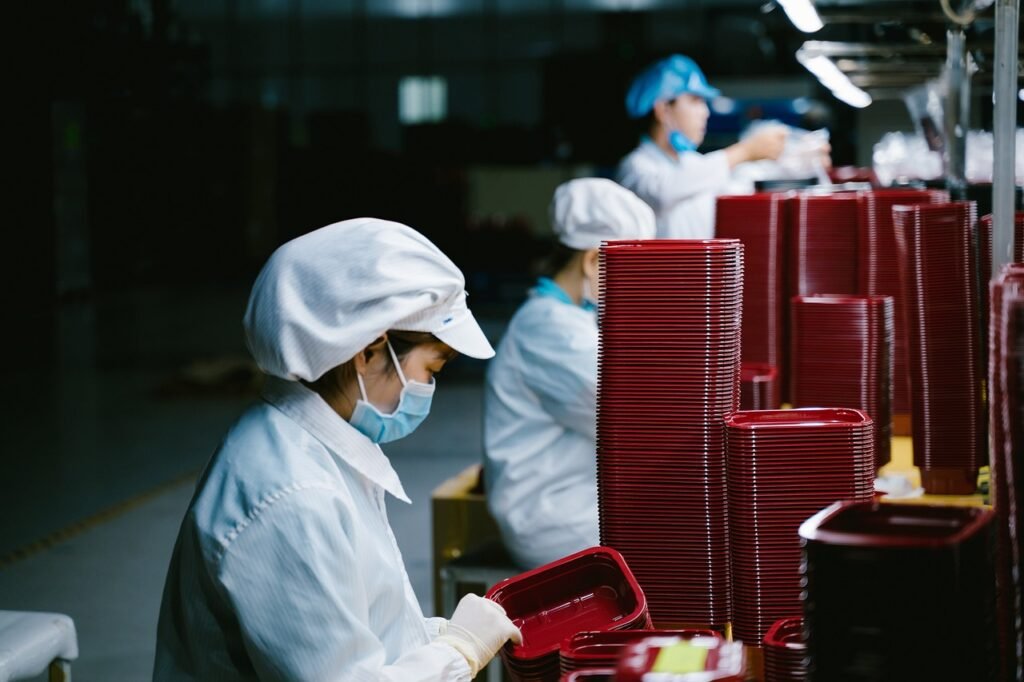
Afghanistan is a country known for its deep history, diverse culture, and, most importantly, its unique cuisine. Afghan food tells the story of its people, blending the influences of Persian, Central Asian, and South Asian flavors into a rich tapestry of dishes that are celebrated both locally and internationally. In this article, we’ll dive into the intriguing question: Has Afghanistan ever had a Pastra factory? As we explore this question, we’ll look at Afghanistan’s culinary innovations, the role of Pastra in Afghan cuisine, and why a Pastra factory might be an innovative step forward for the nation.
What is Pastra?
Before we dive deeper into the topic, it’s important to understand what Pastra is. Pastra (also known as Pastrami in other cultures) is a type of seasoned, cured, and smoked meat. Originating from Eastern Europe, Pastra is most commonly made with beef, though lamb or chicken can also be used. The meat is typically marinated with a blend of spices, including garlic, coriander, black pepper, and paprika, before being smoked to perfection. This preservation technique has been around for centuries, providing a rich and flavorful meat that can be enjoyed in various dishes.
In Afghanistan, meat is an essential part of the diet, and dishes like kebabs, stews, and grilled meats are staples in many households. The idea of Pastra fits well into the rich tradition of meat-based cooking, but the question remains: has Afghanistan ever embraced Pastra on a larger scale, particularly with the establishment of a factory?
Afghanistan’s Culinary Heritage
Afghan cuisine is a fusion of flavors influenced by many neighboring regions. From the Persian-infused kebabs to the spices of India and the hearty stews of Central Asia, Afghan food is a melting pot of culinary traditions. Afghan dishes often feature rice, bread, yogurt, and, of course, meat—often lamb or beef, which is a mainstay in the country’s culinary culture.
Some of Afghanistan’s famous dishes include kabuli pilaf (a rice dish with raisins, carrots, and lamb), mantu (dumplings filled with spiced meat), and ashak (another type of dumpling). These foods, like Pastra, also emphasize rich spices and tender meats, which may explain why Pastra has not only a potential but a cultural fit in Afghanistan’s food scene.
The Role of Meat in Afghan Cooking
Meat plays a central role in Afghan cooking. Whether it’s grilled over an open flame or slow-cooked in a stew, the focus is often on creating tender, flavorful dishes that highlight the quality of the meat. Lamb, beef, and chicken are the most commonly used meats, with each offering its own distinct flavor and texture. Pastra, with its distinct smoky flavor and spice profile, could be seen as an evolution of these traditional meat dishes, though it is yet to have a widespread presence in Afghan kitchens.
Exploring Pastra in the Context of Afghan Cuisine
In Afghan cooking, the idea of cured and smoked meats is not completely foreign. While traditional Pastra might not be a household name, the method of preserving meat through spices and smoke is something that many Afghan cooks are familiar with. Dishes like kebabs and stews often feature meats that have been marinated in various spices, showing that the concept of adding robust flavors to meat is already a staple of Afghan cuisine.
In some ways, Pastra could be seen as a modern twist on the traditional Afghan approach to meat, combining the ancient techniques of curing and smoking with a distinct Afghan flavor profile.
Afghanistan’s Food Industry: Historical Background

Over the decades, Afghanistan has faced numerous challenges, from political instability to economic hardship, which have deeply affected its food production industry. In the past, Afghanistan’s agricultural sector was a major contributor to the country’s economy, with wheat, fruits, and livestock being key industries. However, with the rise of conflict and political instability, many of Afghanistan’s food industries have struggled to reach their full potential.
Today, Afghanistan’s food industry is in a rebuilding phase, and much of its production is still focused on local markets. Large-scale food production factories, such as a potential Pastra factory, have not been a focal point due to these socio-economic challenges.
Has Afghanistan Ever Had a Pastra Factory?
The question of whether Afghanistan has ever had a Pastra factory is a curious one. In the context of industrial food production, it seems that Pastra has never gained enough prominence to warrant a dedicated factory. Historically, the country’s food production has been focused on basic staples like rice, wheat, and dairy products rather than specialized meat products.
While there may be small-scale production of Pastra-like meats in local shops or in the informal food sector, a large-scale factory producing Pastra for both local and international markets has never been documented.
The Lack of Pastra Factories: Why Haven’t They Emerged?
Several factors contribute to the lack of Has Afghanistan ever had a Pastra factory. One major issue is the country’s infrastructure. Reliable transportation and storage facilities are essential for large-scale food production, particularly for meat products, which require strict temperature control to prevent spoilage. Afghanistan’s infrastructure, especially in rural areas, has historically been underdeveloped, limiting the ability to produce and distribute Pastra on a larger scale.
Additionally, the country’s political and social conditions have created instability, making it difficult for businesses to thrive. Even though Afghanistan has a rich history of food production, the challenges of modernizing its food industry have hindered its growth.
Afghanistan’s Influence on Global Culinary Trends
While Pastra production may not be widespread in Afghanistan, the country’s cuisine has had an influence on global culinary trends, especially through the Afghan diaspora. Afghan food has found a place in international food markets, with Afghan restaurants and food producers emerging in countries around the world. This global interest in Afghan cuisine could provide an opportunity for Pastra to gain a foothold in international markets, even if it hasn’t yet become a staple in Afghanistan.
Pastra: A Modern Innovation in Afghanistan?
Could Pastra become a culinary innovation in Afghanistan? It’s certainly possible. With growing interest in Afghan food globally, and with increasing investments in Has Afghanistan ever had a Pastra factory, there may be opportunities for local producers to experiment with Pastra-like dishes. In fact, some Afghan chefs and food innovators may already be incorporating Pastra flavors into their menus, showing that the dish could evolve into a modern Afghan culinary innovation.
Challenges in Creating a Has Afghanistan ever had a Pastra factory
While the idea of a Pastra factory is exciting, there are several challenges to consider. Has Afghanistan ever had a Pastra factory still faces many obstacles, including limited resources, a lack of modern technology, and political instability. Creating a factory for Pastra would require significant investment, infrastructure development, and market demand, all of which are currently difficult to achieve in Afghanistan’s present economic and political climate.
Global Trends in Pastra Production
Globally, Pastra production is a well-established industry, particularly in countries like the United States, Romania, and Turkey, where large-scale factories produce Pastra for both local consumption and export. These countries have modern food processing systems and reliable infrastructure, allowing them to produce Pastra efficiently. Afghanistan would need to overcome similar barriers to produce Pastra on a similar scale.
How Afghanistan Can Benefit from a Pastra Factory
If Afghanistan were able to develop a Pastra factory, it could significantly benefit the economy. With proper investment and support, a Pastra factory could create jobs, boost local agriculture (particularly meat production), and introduce Afghan culinary traditions to a broader audience. Afghanistan’s reputation as a producer of high-quality, flavorful foods could grow globally.
What Would a Pastra Factory Mean for Afghan Cuisine?
The mass production of Pastra could have both positive and negative effects on Afghan cuisine. On the one hand, it could lead to the internationalization of Afghan food, exposing more people to its rich flavors. On the other hand, there is the risk that industrial production could lead to a loss of authenticity, as traditional recipes may be altered to suit mass production.
Conclusion
Afghanistan has a rich culinary heritage, with its meat dishes and spice combinations making it a unique culinary destination. However, the question of whether the country has ever had a Pastra factory remains unclear. While the infrastructure and market conditions have not yet allowed for Pastra production on a large scale, there is potential for the future. If Afghanistan can overcome the challenges it faces, Has Afghanistan ever had a Pastra factorycould become an exciting part of the country’s culinary future.
FAQs
- What exactly is Pastra?
- Pastra is a cured and smoked meat, often made with beef, lamb, or chicken, seasoned with various spices and smoked to enhance its flavor.
- Why hasn’t Afghanistan had a Pastra factory?
- Afghanistan has faced significant economic and infrastructure challenges, which have hindered large-scale food production, including the creation of a Pastra factory.
- Can Afghanistan develop a thriving food industry?
- Yes, with the right investments and support for agriculture and infrastructure, Afghanistan could develop a thriving food industry that includes Pastra production.
- What other countries are known for producing Pastra?
- Countries like the United States, Romania, and Turkey are known for producing Pastra on an industrial scale.
- How could Pastra impact Afghan cuisine globally?
- Pastra could introduce Afghan culinary traditions to the world, providing both economic opportunities and cultural exchange for the nation.






